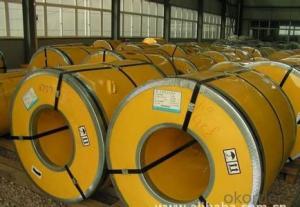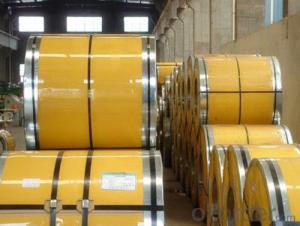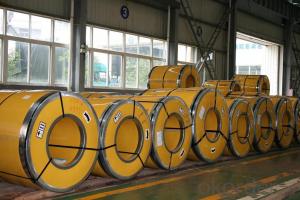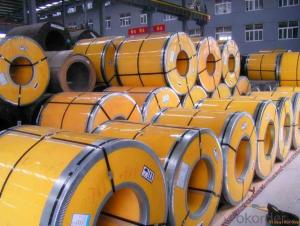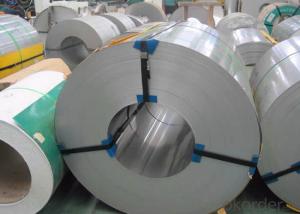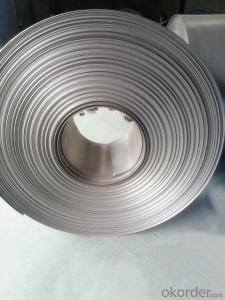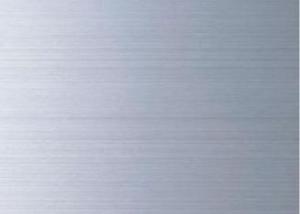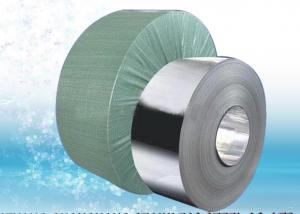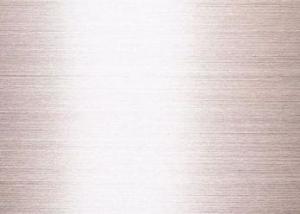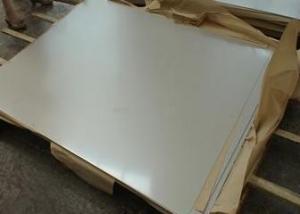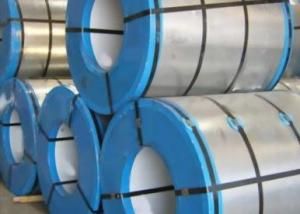Cold Rolled Stainless Steel Strip 304 Serious
- Loading Port:
- Shanghai
- Payment Terms:
- TT OR LC
- Min Order Qty:
- 25 m.t.
- Supply Capability:
- 100000 m.t./month
OKorder Service Pledge
OKorder Financial Service
You Might Also Like
Cold Rolled Stainless Steel Strip 304 Serious
1.Structure of Cold Rolled Stainless Steel Strip 304 Serious
Cold Rolled Stainless Steel Strip 304 Serious is one of the raw material of the cold rolled stainless steel strip, which can be used directly in many places. Stainless Steel (Stainless Steel) is short for acid-proof Stainless Steel, resistant to weak corrosive medium such as air, steam, water, or with a Stainless Steel grade.
2.Main Features of Cold Rolled Stainless Steel Strip 304 Serious
1) weldability: The purpose of the different requirement for welding performance are different.1 Kind of tableware generally do not require the performance of welding, even including some pot class enterprise. But the vast majority of products all need raw materials welding performance is good, like the 2 kinds of tableware, thermos flask, steel pipes, water heaters, water dispensers, etc.
2) Corrosion resistance The vast majority of stainless steel products for corrosion resistant performance is good, like a, 2 kinds of tableware, kitchen utensils and appliances, water heaters, water dispensers, etc., some foreign businessmen on corrosion resistance of products also do experiment: in NACL aqueous solution heated to boiling, after a period of time the best solution, wash and drying, weight loss, to determine the degree of corrosion (note: the product polishing, because of the sand cloth or sandpaper containing Fe, will cause the test surface rust spots)
3) Polishing performance In today's society stainless steel products in production after polishing the process commonly, when only a small number of products such as water heaters, water dispenser tank don't need polishing. So this will require materials polishing performance is very good. The factors influencing polishing performance mainly include the following: 1) raw material surface defects. Such as scratch, pitting, pickling, etc. (2) raw material problem. Hardness is too low, easy when polishing cast light (BQ), and the hardness is too low, the surface easily when deep drawing appear orange peel phenomenon, which affects the BQ. Relatively high hardness of BQ sex is good. (3) after deep drawing products, great deformation area surface will be a small black spots and RIDGING, thus affecting the BQ.
4) Heat resistant performance Heat resistant performance refers to the high temperature stainless steel can still maintain its excellent physical and mechanical properties. Carbon: the influence of carbon in austenitic stainless steel is formed strong and steady. Set the austenitic austenitic area and expand elements. Carbon formation of austenite is about 30 times that of the nickel, the ability of carbon is a kind of gap elements, through the solid solution strengthening can significantly increase the strength of the austenitic stainless steel. Carbon austenitic stainless steel can be improved in high concentration chloride (e.g., 42% MgCl2 boiling solution) in the performance of the resistance to stress corrosion. But, in the austenitic stainless steel, carbon is often seen as the harmful elements, this is mainly due to the corrosion of stainless steel used in some conditions, such as welding or heating by 450 ~ 850 ℃), carbon steel with chromium in forming high chromium Cr23C6 type carbon compounds which can lead to local chromium depletion, make steel corrosion resistance especially resistant to intergranular corrosion performance degradation. So. Since the 60 s of the development of new cr-ni austenitic stainless steel is mostly carbon content less than 0.03% or 0.02% of the ultra-low carbon type
5) Corrosion resistance When the atomic number of no less than 12.5% chromium content in steel, can make the steel electrode potential mutations, the negative potential to the positive electrode potential. To prevent electrochemical corrosion.
3. Cold Rolled Stainless Steel Strip 304 Serious Images
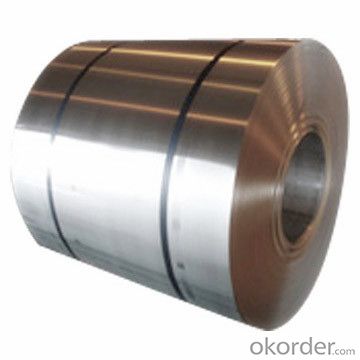
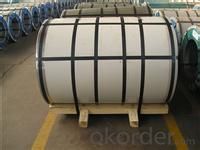
4. Cold Rolled Stainless Steel Strip 304 Serious Specification
The word "stainless steel" is not merely refers to a pure stainless steel, but said more than one hundred kinds of stainless steel industry, the development of each stainless steel has good performance in their specific applications. The key to the success of the first is to make clear purpose, and then determine the correct material. Related to architectural construction applications usually only six types of steel. They contain 17 ~ 22% chromium, good steel contains nickel. Add molybdenum can further improve the atmospheric corrosion resistance, especially containing chloride atmospheric corrosion resistance. Stainless steel often according to the state of organization can be divided into: martensite steel, ferritic steel, austenitic steel, austenitic (two-phase) - ferrite stainless steel and precipitation hardening stainless steel, etc. In addition, according to ingredients can be divided into: chromium stainless steel, chromium nickel stainless steel and chromium manganese nitrogen stainless steel, etc.
1) Ferritic stainless steel Chromium containing 15% ~ 30%. Its corrosion resistance, toughness and weldability with chromium content increases with the increase of chloride stress corrosion resistance is superior to other types of stainless steel, fall into this category of Crl7, Cr17Mo2Ti, Cr25, Cr25Mo3Ti, Cr28, etc. Ferritic stainless steel because of the high chromium content, corrosion resistance and oxidation resistance are relatively good, but the mechanical properties and process performance is poorer, more used to stress less acid structure and steel used as antioxidant. This kind of steel to withstand atmosphere, nitric acid and corrosion of the brine solution, and has good high temperature oxidation resistance, low thermal expansion coefficient, etc, used in nitric acid and food factory equipment, also can make work under high temperature parts, such as gas turbine parts, etc.
2) Austenitic stainless steel The title Chromium is more than 18%, still contain about 8% of the nickel and small amounts of molybdenum, titanium, nitrogen and other elements. Good comprehensive performance, corrosion resistant to a variety of media. Number of austenitic stainless steel is commonly used one cr18ni9, 0 cr19ni9, etc. In the Wc < 0.08% 0 cr19ni9 steel, steel grade is marked as "0". This class contains large amounts of Ni and Cr in steel, make steel in austenitic state at room temperature. This kind of steel has good plasticity and toughness, weldability and corrosion resistance and non-magnetic or weak magnetic, the corrosion resistance in oxidizing and reducing medium are good, used to make acid equipment, such as corrosion resistant containers and equipment lining, pipelines, nitric acid resistant equipment parts, etc., also can be used as the main body of watches and clocks jewelry stainless steel material. Austenitic stainless steel with solid solution treatment, the steel heating to 1050 ~ 1150 ℃, then water-cooled or air-cooled, for single-phase austenitic organization.
3) Austenitic, ferritic duplex stainless steel The advantages of both austenitic and ferritic stainless steel, and has the superplasticity. Austenite and ferrite The title Each accounts for about half of the stainless steel. In the case of contain low C, Cr content was 18% ~ 18%, Ni content at 3% ~ 3%. Some steel containing Mo, Cu, Si, Nb, Ti, N and other alloying elements. This kind of steel both austenite and ferrite stainless steel, the characteristics of compared with ferrite, plasticity and toughness is higher, no room temperature brittleness, intergranular corrosion resistance and welding performance were significantly increased, while maintaining a ferritic stainless steel of 475 ℃ brittleness and high thermal conductivity, has the characteristics of superplasticity. Compared with austenitic stainless steel, high strength and resistance to intergranular corrosion and resistance to chloride stress corrosion is improved obviously. Duplex stainless steel has excellent resistance to pitting corrosion performance, is also a kind of nickel and stainless steel.
4) Precipitation hardening stainless steel For austenitic or martensite structure matrix, and the number of precipitation hardening stainless steel commonly used such as 04 cr13ni8mo2al. It can pass the precipitation hardening (also known as the age hardening) dealing with the hard (strong) of stainless steel.
5) Precipitation hardening stainless steel For austenitic or martensite structure matrix, and the number of precipitation hardening stainless steel commonly used such as 04 cr13ni8mo2al. It can pass the precipitation hardening (also known as the age hardening) dealing with the hard (strong) of stainless steel.
5.FAQ of Cold Rolled Stainless Steel Strip 304 Serious
We have organized several common questions for our clients,may help you sincerely:
①How about your company?
A world class manufacturer & supplier of castings forging in carbon steel and alloy steel,is one of the large-scale professional investment casting production bases in China,consisting of both casting foundry forging and machining factory. Annually more than 8000 tons Precision casting and forging parts are exported to markets in Europe,
②How to guarantee the quality of the products?
We have established the international advanced quality management system,every link from raw material to final product we have strict quality test;We resolutely put an end to unqualified products flowing into the market. At the same time, we will provide necessary follow-up service assurance.
③How is the chemical compositon?
304 chemical composition:
C ≤ 0.08, Si ≤ 0.075, Mn ≤ 2.00, P ≤ 0.04, S ≤ 0.03, Ni :8.0-11.0, Cr :18.0-20.0
- Q: What is the thermal expansion coefficient of stainless steel strips?
- The thermal expansion coefficient of stainless steel strips can vary depending on the specific grade of stainless steel being used. However, in general, stainless steel has a relatively low coefficient of thermal expansion compared to other materials. The coefficient of thermal expansion is a measure of how much a material expands or contracts when exposed to changes in temperature. Stainless steel typically has a coefficient of thermal expansion ranging from about 10 to 17 µm/m°C (micrometers per meter per degree Celsius). This means that for every degree Celsius increase in temperature, a stainless steel strip will expand by approximately 10 to 17 micrometers per meter in length. It is important to note that the exact coefficient of thermal expansion may vary depending on the specific alloy composition and heat treatment of the stainless steel. Therefore, it is recommended to consult the manufacturer's specifications or conduct specific testing to determine the precise thermal expansion coefficient of a particular stainless steel strip.
- Q: How are stainless steel strips used in construction?
- Stainless steel strips are commonly used in construction for various purposes such as framing, structural support, and finishing touches. They are often utilized as reinforcement in concrete structures, providing additional strength and durability. Stainless steel strips are also employed in the fabrication of building components like beams, columns, and lintels due to their resistance to corrosion and high strength-to-weight ratio. Additionally, these strips are utilized for cladding and decorative purposes, adding a sleek and modern aesthetic to architectural designs.
- Q: Can stainless steel strips be used in electronic applications?
- Yes, stainless steel strips can be used in electronic applications. They are commonly used as connectors, terminals, and shielding materials in various electronic devices and components due to their excellent conductivity, corrosion resistance, and mechanical strength.
- Q: Can stainless steel strips be used in the mining industry?
- Indeed, the mining industry can utilize stainless steel strips. Stainless steel, known for its versatility and durability, boasts exceptional resistance against corrosion, high temperatures, and mechanical strain. These remarkable properties render it well-suited for a multitude of applications within the mining sector. In mining equipment and machinery, such as conveyors, crushers, screens, and tanks, stainless steel strips find common use. They are frequently employed for lining chutes and hoppers, as well as for the creation of wear-resistant parts and components. Moreover, stainless steel strips play a vital role in the construction of mining infrastructure, including pipelines, storage tanks, and processing plants. The mining industry often operates in challenging environments, characterized by exposure to corrosive chemicals, abrasive materials, and extreme temperatures. Stainless steel's ability to resist corrosion and handle high temperatures makes it an ideal choice for applications where other materials might rapidly deteriorate. Moreover, stainless steel's ease of cleaning and maintenance is of utmost importance in the mining industry. Maintaining cleanliness is crucial for optimizing operational efficiency, reducing downtime, and ensuring product quality. In conclusion, stainless steel strips offer an effective solution for the mining industry, thanks to their corrosion resistance, high-temperature performance, durability, and ease of maintenance. Their utilization in mining equipment, machinery, and infrastructure guarantees reliability and long-lasting functionality.
- Q: What are the factors affecting the thermal conductivity of 111 stainless steel strips?
- The factors affecting the thermal conductivity of 111 stainless steel strips include the composition and microstructure of the steel, the presence of alloying elements, the grain size and orientation, the temperature, and the presence of impurities or defects in the material.
- Q: Are stainless steel strips suitable for heat exchangers?
- Yes, stainless steel strips are suitable for heat exchangers. Stainless steel has excellent corrosion resistance, high thermal conductivity, and good mechanical properties, making it a suitable material for heat exchanger applications. It can withstand high temperatures, resist scaling and oxidation, and is easy to clean, making it an ideal choice for efficient heat transfer in various industries.
- Q: Can stainless steel strips be used in automotive exhaust systems?
- Automotive exhaust systems can indeed utilize stainless steel strips. Due to their exceptional corrosion resistance and durability, stainless steel is widely favored for exhaust systems. Its ability to withstand extreme temperatures and harsh conditions makes it an excellent fit for the demanding environment of an exhaust system. Stainless steel strips, renowned for their strength and resistance to rust and corrosion, are frequently employed in the construction of exhaust pipes, mufflers, and other components. Furthermore, stainless steel strips are easily moldable, weldable, and shapeable, enabling them to cater to the precise needs of an exhaust system, thus rendering them an ideal option for automotive applications.
- Q: How do stainless steel strips handle vibration and shock?
- The exceptional resistance to vibration and shock of stainless steel strips is widely recognized. This is primarily due to their inherent mechanical properties and composition. Stainless steel boasts high strength and a low elastic modulus, endowing it with the capacity to absorb and distribute energy upon impact or when exposed to vibration. This characteristic enables stainless steel strips to effectively dampen vibrations and impede the transmission of shockwaves. Moreover, stainless steel exhibits remarkable resistance to corrosion, guaranteeing the durability and longevity of the strips even in harsh environments. This corrosion resistance also works to uphold the structural integrity of the material, rendering it less susceptible to damage from vibrations and shocks. Furthermore, stainless steel strips can be manufactured with specific alloys and finishes that further amplify their ability to withstand vibration and shock. For instance, certain grades of stainless steel can undergo heat treatment or cold rolling to fortify their strength and mitigate the risk of deformation upon impact. In summary, stainless steel strips possess a comprehensive set of attributes that equip them to handle vibration and shock adeptly. These include their high-strength properties, low elastic modulus, corrosion resistance, and the capacity to tailor their composition to suit specific applications.
- Q: How do you prevent galling of stainless steel strips?
- One effective way to prevent galling of stainless steel strips is by applying a lubricant or anti-seize compound to the surface. This helps reduce friction and wear during sliding or rubbing contact, preventing the surfaces from seizing or sticking together. Additionally, using proper machining techniques, such as slow and steady cutting speeds, adequate cooling, and sharp cutting tools, can also minimize the risk of galling.
- Q: Do you have stainless steel with magnetic?
- Austenitic stainless steel is the stainless steel with austenite structure at normal temperature. When the steel containing Cr is about 18%, Ni, 8%~10% and C is about 0.1%, it has a stable austenite structure. Austenitic chromium nickel stainless steel includes the famous 18Cr-8Ni steel, and on this basis, increasing the content of Cr, Ni, and adding Mo, Cu, Si, Nb, Ti and other elements developed by the high Cr-Ni series steel.
Send your message to us
Cold Rolled Stainless Steel Strip 304 Serious
- Loading Port:
- Shanghai
- Payment Terms:
- TT OR LC
- Min Order Qty:
- 25 m.t.
- Supply Capability:
- 100000 m.t./month
OKorder Service Pledge
OKorder Financial Service
Similar products
Hot products
Hot Searches
Related keywords
